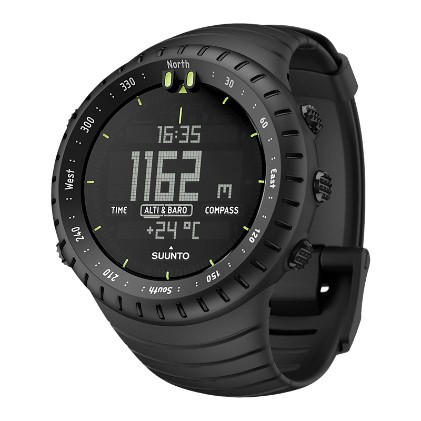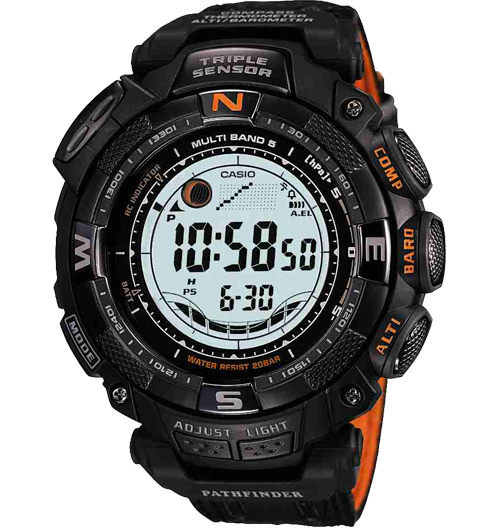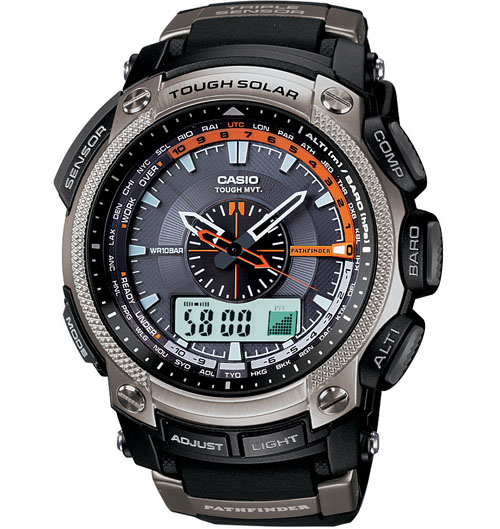
If you spend a lot of time out of doors, any time with SAR folks, or have ever met an REI employee, you have seen an ABC watch. ABC watches are the big, bulky, hockey pucks that people wear on their wrist that give out Altimeter, Barometer, and Compass readings, or “ABC.”
ABC watches are not precise measuring tools. They rely on barometric readings to determine altitude, which can cause variances in accuracy. They are electronic, and therefore rely on batteries to operate, which in turn leads to the “another thing to go wrong” discussion. The digital compass can be off by as much as 10 degrees. For atomic calibrations to acquire reception, the watch requires conditions that rival that of a 9-year-old’s VFR flight plan for a Scooby Doo kite. They are huge and can weigh quite a bit. So honestly, what’s the friggin’ point? I’ll tell you what the friggin’ point is! They are awesome!
If there are so many inconsistencies and accuracy variances with ABC watches, why bother using them as a tool?
I guarantee, that (most) experienced outdoorsman who wear ABC watches, do not rely on their ABC watch’s accuracy as an end-all reference. Rather, they trust it completely as an estimate. When you use the device in that frame of mind, these devices really start to get some love, and you start to feel like Dick Tracy a bit.
When calibrated appropriately, the altimeter can be accurate. The barometer can be used to predict weather changes. They present tide and moon information. Some models are equipped with integrated solar panels, which negates the need to change out batteries. You can dive with them, and they can take a beating. They have an onboard thermometer that can accurately determine the temperature when used appropriately. If you’re out of the atomic signal range for an entire month, the worst-case scenario is +/- 20 seconds of inaccuracy, which is practically negligible.
As long as you are a well-informed consumer and operator, you will actually get fairly good readings and accuracy out of your ABC watch, and years of (ab)use out of it. It’s generally the people who don’t know how to use it and don’t calibrate it, that get poor readings and experiences with these watches.
The more that I read about the capabilities and versatility of these devices, I eventually developed an infatuation for ABC watches. I’ve decided to get one for general adventuring, mountaineering, and honestly, staying on top of what day it is. For me, it has come down to two brands based on reviews, performance, reputation, and value: Suunto and Casio. They both manufacture high-quality ABC watches, so it’s time to highlight generalized differences. There are two ways to go:
- The hypnotic choice. Suunto is generally recognized as a higher-end watch, even though it isn’t more functional or reliable than its competition. They are preferred for brand purists, similarly to brand loyalty often seen to high-end companies like Oakley. People buy Oakleys because they are Oakleys. Their reputation precedes them, which is a placebo effect. Suunto has a very clean design, which seems to provide for a very popular UI. Suunto’s do not incorporate solar technology, so you will have to change your battery every 6-8 months or so.
- The practical choice. Casio provides a more practical product but tends to lack the (slightly) better accuracy of the Suunto. It seems to me that the Casio crowd attracts two groups: those that like Casio design, and those that like Casio function. Casio ABCs are very clearly defined in both these categories. Casio design is the commonplace mountaineers watch, that boasts a large, complicated appearance, generally with labels, dials, multi-level LCD screens, and other ‘busy’ design features. Casio function is a draw because they are the only manufacturer of ABC watches that incorporates an integrated solar panel, which means that they don’t require battery replacements as long as you expose them to sunlight occasionally. Additionally, most Casio ABC watches use wireless signals to synchronize with the atomic clock, while Suuntos do not.
If Suunto had solar-powered atomic watches, I would definitely go their route. It is my opinion that they are much more attractive for daily use, and that means a lot to me when I’ll be using a watch as an EDC tool at the office in addition to the backcountry. I could live without the atomic timekeeping, but knowing that there is solar technology being used in existing watches would really bug me every time I would have to change the batteries on the Suunto. So, because of my need for solar, I have decided to focus on Casio watches.

Today, I’m lusting over the Casio PAW1500GB-1V (shown above), which is clearly visible on Casio’s website. I’m directly attracted to the simple dark color scheme and the cloth band that circumferences the entire wrist, including underneath the watch body. Unfortunately, what Casio advertises on their product page doesn’t accurately reflect what is part of their currently available product line. In fact, that watch is a special edition for the 2009 winter season, which is no longer in production. Why Casio is still advertising it on their site I do not know, nor do I appreciate being misled.
Casio customer service has suggested I wait until mid-November to see if a new winter edition is released. If no winter version is released by the end of November, I will likely either purchase the PAW5000-1 (shown below) or hold out for the next Casio ABC that has a cloth band or a Suunto with solar capabilities, whichever comes first.


Casio G-Shocks are more accurate than Suunto. If you dig deep you’ll find info online by ex-marines who have used both in combat.
Suunto is just a brand – placebo effect as you clearly said.
Cheers.
Cheers?? you clearly have been watching tomany GI Joe movies.
Pingback: Accuracy of ABC watches
Pingback: The Suunto Ambit Knows No Bounds | RigCast
Pingback: R3: Casio PAW5000-1 | RigCast
Pingback: I2: Casio PAW5000-1 | RigCast